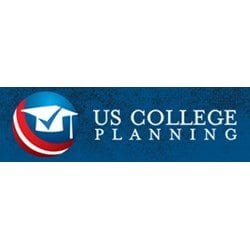The cost of a college education is rapidly climbing – but did you know that there are available tax credits which can make this expense more bearable? Below, courtesy of IRS.gov, are three tax credits that you may qualify for, if you or a family member are pursuing higher education:
American Opportunity Credit
Under the American Recovery and Reinvestment Act (ARRA), more parents and students qualify for a tax credit, the American opportunity credit, to pay for college expenses.
The American opportunity credit originally modified the existing Hope credit for tax years 2009 and 2010, and was later extended for an additional two years – 2011 and 2012, making the benefit available to a broader range of taxpayers, including many with higher incomes and those who owe no tax. It also adds required course materials to the list of qualifying expenses and allows the credit to be claimed for four post-secondary education years instead of two. Many of those eligible qualify for the maximum annual credit of $2,500 per student.
The full credit is available to individuals whose modified adjusted gross income is $80,000 or less, or $160,000 or less for married couples filing a joint return. The credit is phased out for taxpayers with incomes above these levels. These income limits are higher than under the existing Hope and lifetime learning credits.
Hope Credit
The Hope credit generally applies to 2008 and earlier tax years. It helps parents and students pay for post-secondary education. The Hope credit is a nonrefundable credit. This means that it can reduce your tax to zero, but if the credit is more than your tax the excess will not be refunded to you. The Hope credit you are allowed may be limited by the amount of your income and the amount of your tax.
The Hope credit is for the payment of the first two years of tuition and related expenses for an eligible student for whom the taxpayer claims an exemption on the tax return. Normally, you can claim tuition and required enrollment fees paid for your own, as well as your dependents’ college education. The Hope credit targets the first two years of post-secondary education, and an eligible student must be enrolled at least half time.
Generally, you can claim the Hope credit if all three of the following requirements are met:
• You pay qualified education expenses of higher education.
• You pay the education expenses for an eligible student.
• The eligible student is either yourself, your spouse or a dependent for whom you claim an exemption on your tax return.
Lifetime Learning Credit
The lifetime learning credit helps parents and students pay for post-secondary education.
For the tax year, you may be able to claim a lifetime learning credit of up to $2,000 for qualified education expenses paid for all students enrolled in eligible educational institutions. There is no limit on the number of years the lifetime learning credit can be claimed for each student. However, a taxpayer cannot claim both the Hope or American opportunity credit and lifetime learning credits for the same student in one year. Thus, the lifetime learning credit may be particularly helpful to graduate students, students who are only taking one course and those who are not pursuing a degree.
Generally, you can claim the lifetime learning credit if all three of the following requirements are met:
• You pay qualified education expenses of higher education.
• You pay the education expenses for an eligible student.
• The eligible student is either yourself, your spouse or a dependent for whom you claim an exemption on your tax return.
IRS education credits can potentially save you thousands of dollars per year. If you’d like to learn more about planning for and obtaining these tax benefits, please get in touch with us today!




